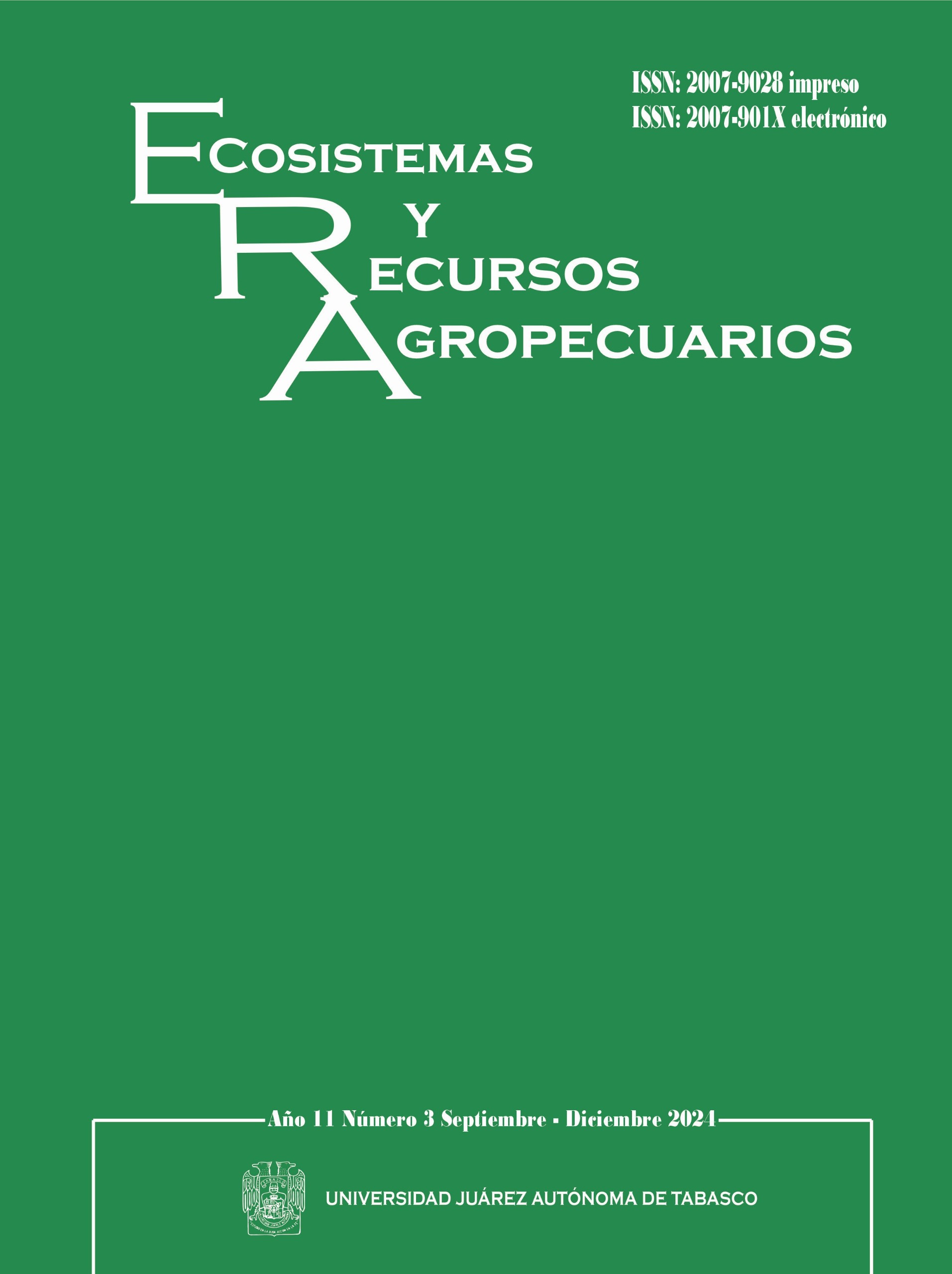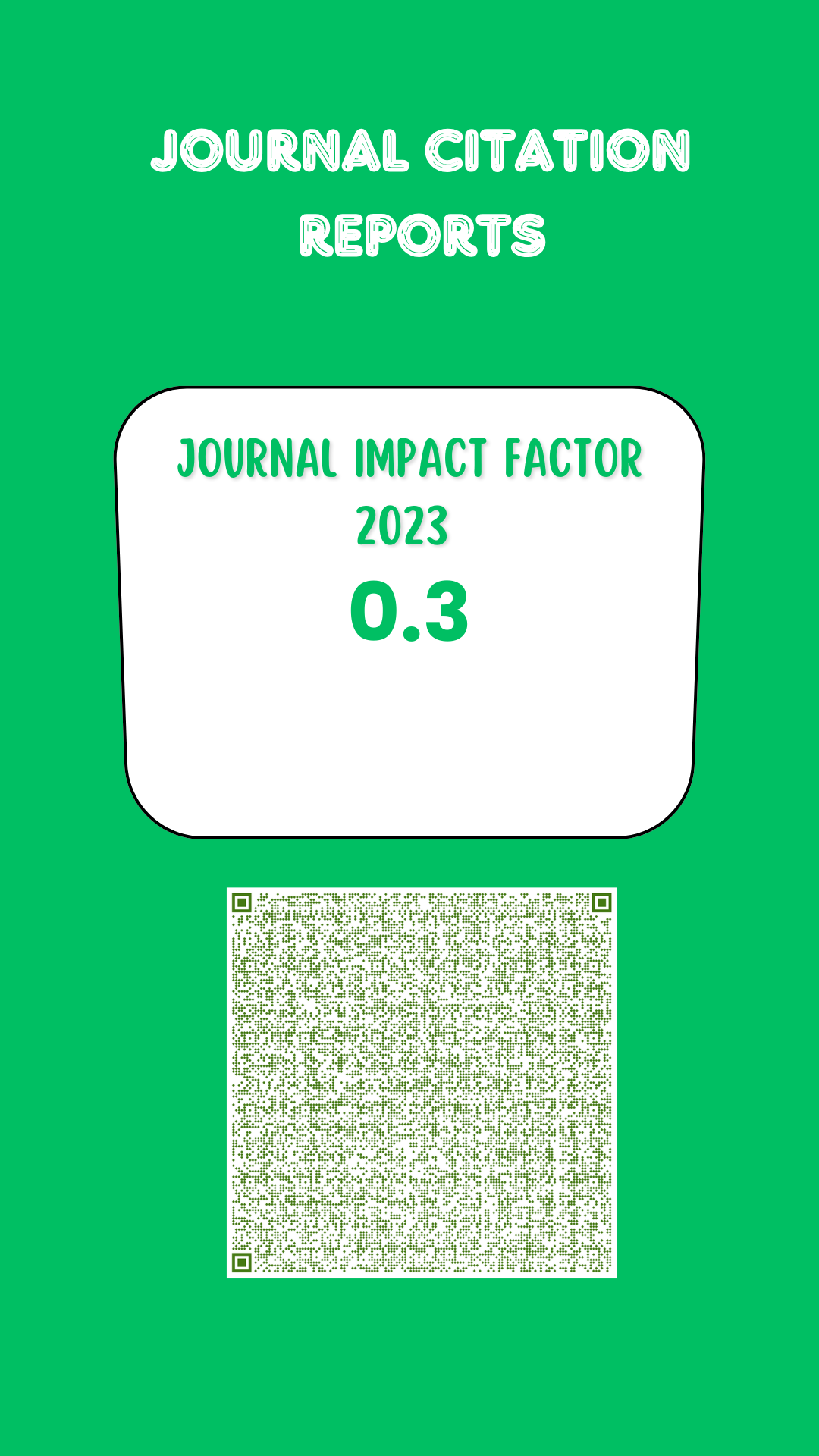Generalized total height-normal diameter model for plantations Pinus leiophylla in Michoacan, Mexico
DOI:
https://doi.org/10.19136/era.a11n3.4139Keywords:
model, height, diameter, plantation, Pino, MichoacanAbstract
Forest plantations have increased in Mexico and statistical tools are required to evaluate and predict their productivity, to plan their use. The objective was to determine a generalized total height-normal diameter model for Pinus leiophylla forest plantations in Patamban, Michoacán, Mexico. Trees were measured in 33 temporary quadrangular random sites in plantations with initial densities of 2,500 trees ha-1 and survival greater than 75%. 779 total height-normal diameter data pairs were used; with values for height of 1.86-19.60 m and 1.5-36 cm for normal diameter. The fit of seven models was checked through their evaluation by nonlinear least squares with the nls function in R®. For the selection of the model and its readjustment, the parameters of significance, coefficient of determination, root mean square of the error, Akaike criterion, Bayesian and bias were compared. The resulting generalized total height-normal diameter structure was refitted with mixed effects between and within sites. The Wang and Tang model presented the best indicators of statistical fit. The mixed effects models showed an improvement in the explanation of sample variability (coefficient of determination: 2.4%), fit statistics (24.5% on average) and in the precision of the estimates in the root mean square of the error and bias greater than 14%. The generalized model was efficient to represent said sample variability in the P. leiophylla forest plantations of the Patamban Indigenous Community, Michoacán, Mexico.
Downloads
References
Bronisz K, Mehtätalo L (2020) Mixed-effects generalized height–diameter model for young silver birch stands on post-agricultural lands. Forest Ecology and Management 460(2020): 1-9. https://doi.org/10.1016/j.foreco.2020.117901.
Burkhart HE, Tomé M (2012) Modeling Forest Trees and Stands (2nd Ed). Springer Dordrecht, 271 p.
Camacho EAR, Rivas SC, Hernández JAL, Durán AAC, Carmona JX, Nagel J (2022) Generalized height-diameter models with random effects for natural forests of central Mexico. CERNE 28: e-103033. https://doi.org/10.1590/01047760202228013033.
Comisión Nacional Forestal (Conafor). (2020). El sector forestal mexicano en cifras 2020. Bosques para el bienestar social y climático. Zapopan, Jalisco, México. 100 p. http://www.conafor.gob.mx:8080/documentos/docs/1/7749El%20Sector%20Forestal%20Mexicano%20en%20Cifras%202019.pdf. Fecha de consulta: 21 de marzo de 2024.
Corral RS, Silva AAM, Quiñonez BG (2019) Modelo generalizado no-lineal altura-diámetro con efectos mixtos para siete especies de Pinus en Durango, México. Revista Mexicana de Ciencias Forestales 10(53): 1-31. https://doi.org/10.29298/rmcf.v10i53.500.
Garibaldi LA, Oddi FJ, Aristimuño FJ, Behnisch AN (2019). Modelos estadísticos en el lenguaje R. Universidad Nacional de Río Negro. Buenos Aires, República Argentina. 260 p.
Hernández RJ, García CX, Hernández RA, García MJJ, Muñoz FHJ, Flores LC, García EGG (2015) Ecuaciones altura-diámetro generalizadas para Pinus teocote Schlecht. & Cham. en el estado Hidalgo. Revista Mexicana de Ciencias Forestales, 6(31): 8-21. https://doi.org/10.29298/rmcf.v6i31.192.
Hernández-Ramos J, García-Magaña JJ, Hernández-Ramos A, García-Cuevas X, García-Espinoza GG, Muñoz-Flores HJ, Sáenz-Reyes J.T. (2018a) Allometric height-diameter equations for Pinus pseudostrobus Lindl. Ecosistemas y Recursos Agropecuarios 5: 15-23. https://doi.org/10.19136/era.a5n13.1131.
Hernández-Ramos J, García-Magaña JJ, García-Cuevas J, García-Espinoza GG, Hernández-Ramos A, Muñoz-Flores HJ, Martínez-Salvador M (2018b) Ecuaciones generalizadas altura-diámetro para bosques de Pinus pseudostrobus Lindl. en Michoacán, México. Madera y Bosques, 24(2): e242494. https://doi.org/10.21829/myb.2018.242494.
IPLAEM (2021) Carpeta de Estadística Básica 2020. Región VI Meseta Purépecha. Instituto de Planeación del Estado de Michoacán de Ocampo. https://cpladem.michoacan.gob.mx/wp-content/uploads/2022/01/Region-VI-Purepecha-2020.pdf. Fecha de consulta: 18 de marzo de 2024.
Kalbi S, Fallah A, Bettinger P, Shataee S, Yousefpour R. 2018. Mixed-effects modeling for tree height prediction models of Oriental beech in the Hyrcanian forests. Journal of Forestry Research, 29: 1195-1204. https://doi.org/10.1007/s11676-017-0551-z.
Lindstrom MJ; Bates DM. 1990. Nonlinear Mixed Effects Models for Repeated Measures Data. Biometrics, 46(3): 673-683.
Medrano FH. (2021). Problemática social, económica y ambiental del establecimiento de plantaciones forestales comerciales en Michoacán, periodo 1997-2018. Doctoral dissertation, Universidad Autónoma Chapingo, Texcoco, Estado de México. 259 p.
Mensah S, Pienaar OL, Kunneke A, du Toit B, Seydack A, Uhl E, Pretzsch H, Seifert T (2018) Height – diameter allometry in South Africa’s indigenous high forests: assessing generic models performance and function forms. Forest Ecology and Management 410, 1–11. https://doi.org/10.1016/j.foreco.2017.12.030.
Mısır N (2010) Generalized height-diameter models for Populus tremula L. stands. African Journal of Biotechnology 9(28): 4348-4355.
Pinheiro J, Bates D (2023) nlme: Linear and nonlinear mixed effects models. In https://cran.r-project.org/web/packages/nlme/nlme.pdf. Fecha de consulta: 10 de enero de 2024.
Ogana FN (2019) Tree height prediction models for two forest reserves in Nigeria using mixed-effects approach. The Journal of the Society for Tropical Plant Research 6(1): 119–128. https://doi.org/10.22271/tpr.2019.v6.i1.017.
Ogana FN, Corral-Rivas S, Gorgoso-Varela JJ (2020). Nonlinear mixed-effect height-diameter model for Pinus pinaster Ait. and Pinus radiata D. Don CERNE 26(1): 150-161. https://doi.org/10.1590/01047760202026012695.
Ordóñez-Prado C, Nava-Nava A, Tamarit-Urias JC, Hernández-Zaragoza P (2023) Ecuaciones para estimar la altura total de culmos comerciales en tres especies de bambú. Ecosistemas y Recursos Agropecuarios 10(3): e3696. https://doi.org/10.19136/era.a10n3.3696
Orduña TC, Castro CA, Ramírez PJ (1999) Mammals from the Tarascan Plateau, Michoacán, México. Revista Mexicana de Mastozoología, 4(1): 53-68. https://doi.org/10.22201/ie.20074484e.1999.4.1.81.
Ozcelik R, Cao QV, Trincado G, Nilsum G (2018) Predicting tree height from tree diameter and dominant height using mixed-effect and quantile regression models for two species in Turkey. Forest Ecology and Management 419(420): 240–248. https://doi.org/10.1016/j.foreco.2018.03.051.
Pinheiro J, Bates D (2013) Mixed-effects models in S and S-PLUS. Springer, New York, USA, pp. 1–537.
R Core Team (2018). R: A language and environment for statistical computing. R Foundation for Statistical Computing, Vienna, Austria. https://www.gbif.org/tool/81287/r-a-language-and-environment-for-statistical-computing. Fecha de consulta: 12 de febrero de 2024.
Sharma RP, Vacek Z, Vacek S. (2016). Nonlinear mixed effect height-diameter model for mixed species forests in the central part of the Czech Republic. Journal of Forest Science 62(10): 470–484. https://doi.org/10.17221/41/2016-JFS.
Seki M, Sakici OE. (2022). Ecoregion-based height-diameter models for Crimean pine. Journal of Forest Research, 27(1), 36-44. https://doi.org/10.1080/13416979.2021.1972511.
Téo SJ, Amaral MS, Figueiredo FA, Tomé M (2017). General height-diameter equation with biological attributes for Pinus taeda L. stands. CERNE 23(4): 403-411. https://doi.org/10.1590/01047760201723042414.
Uzoh F (2017) Height-diameter model for managed even-aged stands of Ponderosa pine for the Western United States using hierarchical nonlinear mixed-effects model. Australian Journal of Basic & Applied Science, 11(4): 69-87. https://doi.org/10.22587/ajbas.2017.11.14.10.
Downloads
Published
Issue
Section
License
Copyright (c) 2024 Ecosistemas y Recursos Agropecuarios

This work is licensed under a Creative Commons Attribution-NonCommercial-ShareAlike 4.0 International License.
Aviso de copyright
Los autores que se envían a esta revista aceptan los siguientes términos:
una. Los autores conservan los derechos de autor y garantizan a la revista el derecho a ser la primera publicación del trabajo con una licencia de atribución de Creative Commons que permite a otros compartir el trabajo con un reconocimiento de la autoría del trabajo y la publicación inicial en esta revista.
B. Los autores pueden establecer acuerdos complementarios separados para la distribución no exclusiva de la versión del trabajo publicado en la revista (por ejemplo, en un repositorio institucional o publicarlo en un libro), con un reconocimiento de su publicación inicial en esta revista.
C. Se permite y se anima a los autores a difundir su trabajo electrónicamente (por ejemplo, en repositorios institucionales o en su propio sitio web) antes y durante el proceso de envío, ya que puede conducir a intercambios productivos, así como a una cita más temprana y más extensa del trabajo publicado. (Consulte El efecto del acceso abierto).



